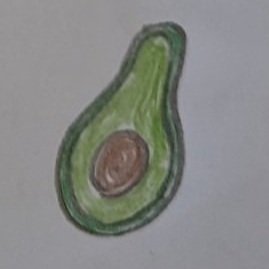Defining priorities
At the beginning of this project, the stakeholders at Roundabout and I thought that improvements to the donation process on the website would be the best way for my MA project to make the most impact. However the data I gathered during the Discover stage identified another potential focus area. So, at this point, I need to define whether I focus on:
The donation process on the website
The website’s overall information architecture
In an ideal world, I would do both of these things and more. But I don’t have time to do this so I need to prioritise (Gibbons 2021).
When I met the stakeholders at Roundabout, I presented the findings from the Discover stage. This included the user test findings. I felt that, although the donation process would benefit from improvements, the overall information architecture for the site should be a higher priority.
Information architecture (IA) “is the information backbone of the site” (Cardello 2014) so my thinking was that, by strengthening this backbone, we would make it easier to improve the donation process later. Focusing on IA also aligned with Roundabout’s plans to redesign their website in the next few months.
So this is what we decided to focus on. Scope-wise (and to meet the assessment criteria for the module I’m studying), my plan is to:
Create a site map proposing a new structure, navigation and ways to label their content
Design a prototype that shows how users like Jackie will navigate the site, to meet the goal of learning about Roundabout
This plan feels achieveable in the time I have.
Reflections
Having defined these priorities, here are my reflections.
What went well
Presenting the Discover findings to the Roundabout stakeholders and involving them in identifying priorities and defining the project scope was useful.
Although I’ve enjoyed and have found the Discover stage useful, having a clearly defined direction and scope feels more comfortable for me because I find that easier to plan and understand where to focus my efforts.
What could be improved
I defined the project priorities and scope through a discussion about the Discover findings. However, I could have decided to use one of the many prioritisation methods out there instead, such as the:
Eisenhower matrix
Impact-effort matrix
MoSCoW analysis
(MindTools 2023),(Gibbons 2021)
Perhaps these methods would have resulted in a better, more informed decision about what to prioritise.
Future plans
When working on future projects and I need to make decisions about what to prioritise, I plan to try one of these prioritisation methods and reflect on the difference it makes.
-
CARDELLO, Jen. 2014. ‘The Difference Between Information Architecture (IA) and Navigation’. Nielsen Norman Group [online]. Available at: https://www.nngroup.com/articles/ia-vs-navigation/ [accessed 22 Mar 2023].
GIBBONS, Sarah. 2021. ‘5 Prioritization Methods in UX Roadmapping’. Nielsen Norman Group [online]. Available at: https://www.nngroup.com/articles/prioritization-methods/ [accessed 18 Mar 2023].
MINDTOOLS. 2023. ‘Eisenhower’s Urgent/Important Principle’. [online]. Available at: https://www.mindtools.com/al1e0k5/eisenhowers-urgentimportant-principle [accessed 18 Mar 2023].
Thank you for reading.




